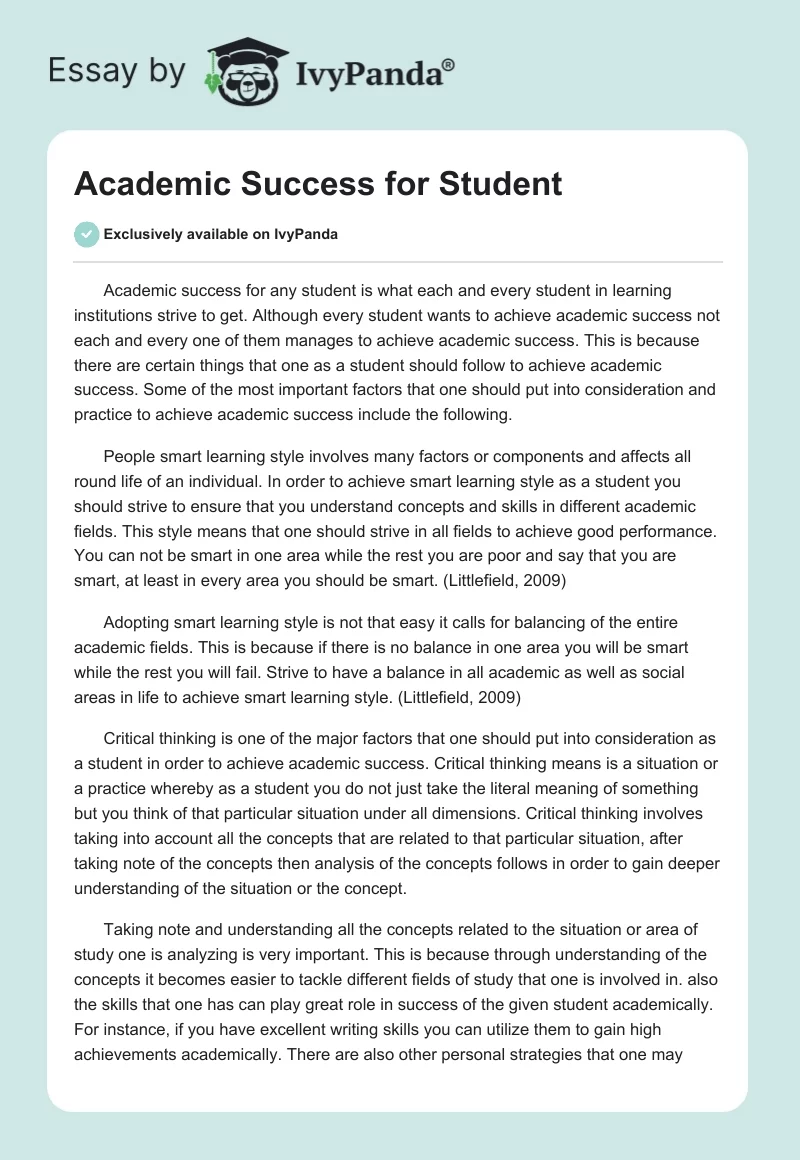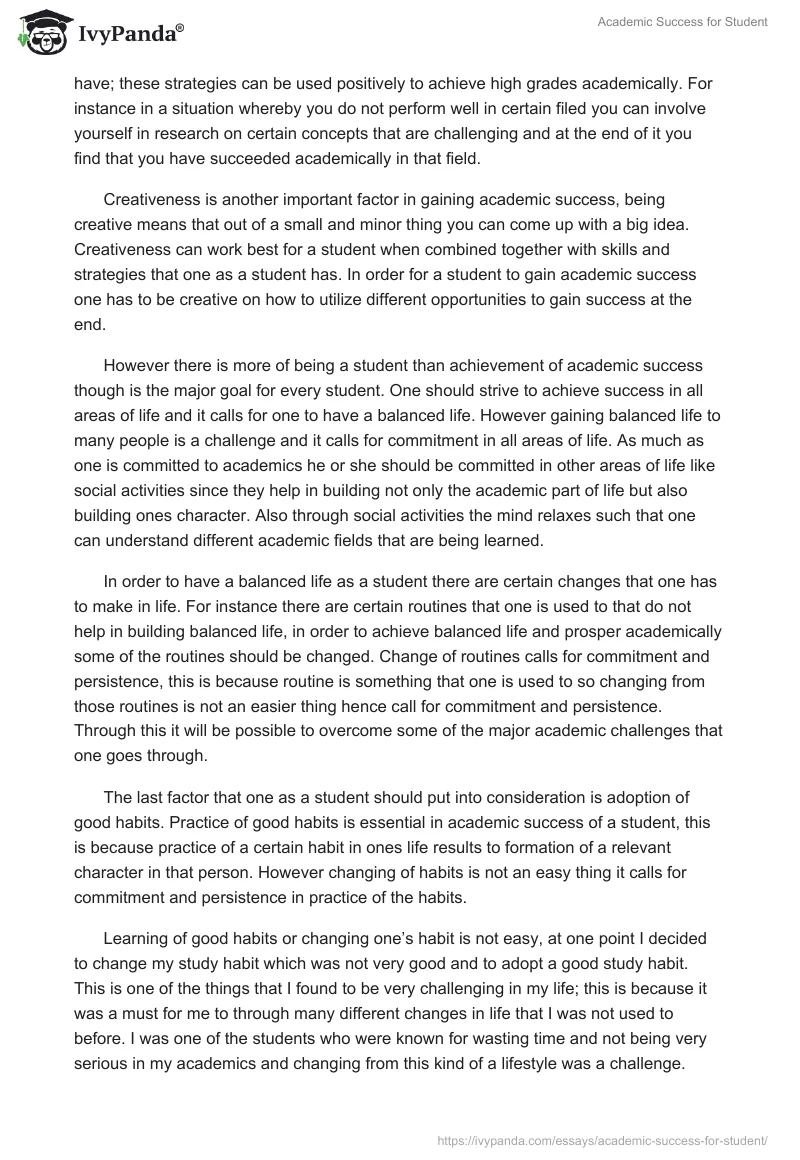Academic success for any student is what each and every student in learning institutions strive to get. Although every student wants to achieve academic success not each and every one of them manages to achieve academic success. This is because there are certain things that one as a student should follow to achieve academic success. Some of the most important factors that one should put into consideration and practice to achieve academic success include the following.
People smart learning style involves many factors or components and affects all round life of an individual. In order to achieve smart learning style as a student you should strive to ensure that you understand concepts and skills in different academic fields. This style means that one should strive in all fields to achieve good performance. You can not be smart in one area while the rest you are poor and say that you are smart, at least in every area you should be smart. (Littlefield, 2009)
Adopting smart learning style is not that easy it calls for balancing of the entire academic fields. This is because if there is no balance in one area you will be smart while the rest you will fail. Strive to have a balance in all academic as well as social areas in life to achieve smart learning style. (Littlefield, 2009)
Critical thinking is one of the major factors that one should put into consideration as a student in order to achieve academic success. Critical thinking means is a situation or a practice whereby as a student you do not just take the literal meaning of something but you think of that particular situation under all dimensions. Critical thinking involves taking into account all the concepts that are related to that particular situation, after taking note of the concepts then analysis of the concepts follows in order to gain deeper understanding of the situation or the concept.
Taking note and understanding all the concepts related to the situation or area of study one is analyzing is very important. This is because through understanding of the concepts it becomes easier to tackle different fields of study that one is involved in. also the skills that one has can play great role in success of the given student academically. For instance, if you have excellent writing skills you can utilize them to gain high achievements academically. There are also other personal strategies that one may have; these strategies can be used positively to achieve high grades academically. For instance in a situation whereby you do not perform well in certain filed you can involve yourself in research on certain concepts that are challenging and at the end of it you find that you have succeeded academically in that field.
Creativeness is another important factor in gaining academic success, being creative means that out of a small and minor thing you can come up with a big idea. Creativeness can work best for a student when combined together with skills and strategies that one as a student has. In order for a student to gain academic success one has to be creative on how to utilize different opportunities to gain success at the end.
However there is more of being a student than achievement of academic success though is the major goal for every student. One should strive to achieve success in all areas of life and it calls for one to have a balanced life. However gaining balanced life to many people is a challenge and it calls for commitment in all areas of life. As much as one is committed to academics he or she should be committed in other areas of life like social activities since they help in building not only the academic part of life but also building ones character. Also through social activities the mind relaxes such that one can understand different academic fields that are being learned.
In order to have a balanced life as a student there are certain changes that one has to make in life. For instance there are certain routines that one is used to that do not help in building balanced life, in order to achieve balanced life and prosper academically some of the routines should be changed. Change of routines calls for commitment and persistence, this is because routine is something that one is used to so changing from those routines is not an easier thing hence call for commitment and persistence. Through this it will be possible to overcome some of the major academic challenges that one goes through.
The last factor that one as a student should put into consideration is adoption of good habits. Practice of good habits is essential in academic success of a student, this is because practice of a certain habit in ones life results to formation of a relevant character in that person. However changing of habits is not an easy thing it calls for commitment and persistence in practice of the habits.
Learning of good habits or changing one’s habit is not easy, at one point I decided to change my study habit which was not very good and to adopt a good study habit. This is one of the things that I found to be very challenging in my life; this is because it was a must for me to through many different changes in life that I was not used to before. I was one of the students who were known for wasting time and not being very serious in my academics and changing from this kind of a lifestyle was a challenge. Though it has been challenging I am happy that today have managed to adapt good study habits and am still pursuing it.
List of reference
Littlefield J. (2009) Smart study strategies.Web.


